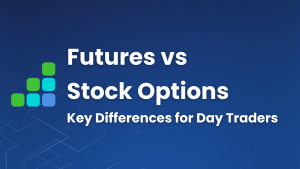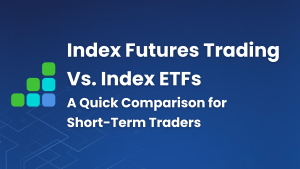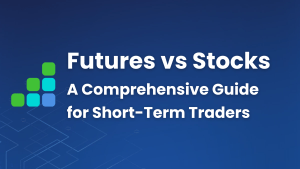This article on 5 Tricks to Master Day Trading is the opinion of Optimus Futures.
Unlike swing or long-term trading, day trading Futures as a style is very unique and requires a particular mindset and approach to be able to find success.
Taking a larger number of future trades relative to swing or longer term trading sounds like an exciting prospect for newer traders but it may also be the fastest way to lose your capital if you don’t know what you’re doing. Below we outline 5 key aspects you must consider if you wish to succeed and be potentially profitable as a day trader.
1: Sound Knowledge of Your Market
Our very first section here could well prick the thought bubbles for a lot of newer traders. However, it might also be the most important in determining your success levels as a day trader. To be able to consistently make money in your chosen market (or markets), it is of utmost importance to know your market like the back of the hand.
And with that comes the skills required to understand general market rhythms and price action dynamics; The role of support and resistance levels, key technical indicators, experience with chart and candlestick patterns, and the general know-how of different market conditions (range bound, swinging, trending etc.) all need to be ingrained in the trader’s subconscious.
This is an important point because day trading will usually not allow for the trader to follow an objective process to analyze the market broadly every time a potential trading opportunity comes by. Most trading decisions will need to be made impromptu and at the moment. While the trader’s focus is strictly on analyzing the opportunity itself, a quick glance of the broader market should effortlessly reveal the broader details and information that could potentially impact the trade’s prospects.
Knowing the existence of any nearby trouble areas in terms of support and resistance areas, market rhythm, current volatility levels, all need to be worked out mostly just in the back of the head while the trader’s conscious brain scans the pros and cons of a potential trading entry or exit. This level of efficiency can really only be achieved with an increased understanding of market behavior. And this brings us to our next important factor.
2: Ample Screen Time
It should be very hard for you to find day traders that do not spend at least several hours watching charts each day (often even on the weekends analyzing past week’s market movements) regardless of their experience level.
The bulk of the reasoning behind this approach was hinted at in the section above where we claimed the importance of having a good understanding of general and specific market behavior. A sure way to achieve this level of knowledge is simply to watch your charts as much as you can.
Newer traders are commonly found actively engaged only during the time that a potential trading opportunity arises, but that may need to significantly change in a day trading environment. A laid-back approach may not only cause you to miss a trading opportunity but also miss out on valuable “on-the-job-training” that comes with watching real-time market action. No amount of backtesting will ever reveal your true trading skills as much as watching the live market action. This point, fortunately, connects very well with our next major factor for day trading success.
3: Sort your Priorities
Day trading can be both immensely fun and engaging as well as hectic and stressful. Depending on your life and trading style this can either be a very good thing or a very bad thing.
Since day traders deal with periodic trading volume fluctuations, instant impacts of fundamental and news developments, and sporadic volatility, watching the markets should not mean having a computer screen hooked up in your lounge next to a TV running Netflix. Day traders who are serious about their success will find the quietest room in the house or better still, rent a separate office space to keep their work and personal lives distinctly separate. As you may have realized by now, successful day trading requires very high degrees of concentration and may require drastic measures to ensure you give your undivided attention to valuable screen time.
The advice extends further on to ensuring a reliable computer possibly with backups in case of power or computer failure. Having PDAs, laptops, and apps on phones with fat data options and installing backup power generators may be a requirement depending on where you live and the regularity of disrupted infrastructure facilities.
4: Comfort in Ad Hoc Decision Making Environments
Many new traders will salivate at the idea of being able to take an increased number of trading opportunities but never find themselves at ease with quick decision-making environments.
While a big part of the ease and comfort in fast-acting trading environments comes from experience, confidence, and understanding of the markets, a good-sized chunk also is derived directly from the very own personality and mental approach of the individual trader.
Some traders, despite being extremely knowledgeable, enjoy taking their time in analyzing the markets and pondering over potential trading decisions including entries and exits without having to abruptly come to a final decision. Other traders, regardless of their trading experience, find it more comfortable to have a hands-on approach that deals with instinctive decision making. They have strong emotional control and can meander their way around tricky trading scenarios purely out of their love for being in these challenging situations.
Before you even think about taking the day trading route, be sure to test it out extensively to ensure it is a style that truly suits you and that your attraction towards it is not merely out of your greed for an increased number of trades or the ‘thrill’ of increased involvement. As discussed earlier, increased involvement can be a very good thing or a very bad thing. People with a lot of family/work obligations and/or a hectic daily schedule often struggle the most as day traders.
5: A Flexible Trading Approach
Swing trading can be advantageous in that it allows traders the flexibility to be on the sidelines until the right trading opportunity comes along. Depending on the time frame, wait times can be as short as a few hours between trades to sometimes days or weeks.
As a day trader, you will likely frustrate yourself if you watch your charts attentively for 8 hours/day without being able to execute a single trade for days at a time because of a highly conservative and rigid trading system.
Within the realm of day trading, much of the flexibility needs to be ingrained within the trading style to ensure the trader has ample reasons to stay tuned in to market action. A good day trading system will use a variety of entry triggers within different market situations and allow for adaptive trade management styles that can be adjusted to fickle and sharply varying market conditions.
Again, this is a domain best practiced by veteran and professional traders and might be a tough ask for a new trader just starting out. Newer traders are often encouraged to operate with highly objective trading styles that exclude much of the ambiguity and allow for the least possible emotional moments. As a day trader, you most likely will need to live day in and day out within emotionally triggering situations.
Bottom Line
Just like pretty much all other trading styles, day trading in itself – while extremely popular and highly advertised – is certainly not the Holy Grail when it comes to finding consistent success as a technical futures market trader.
As you may have realized, a lot depends on your individual circumstances, trading style, and experience levels. If you can check enough boxes, however, day trading can potentially be one of the most lucrative trading styles you can adopt.
There is a substantial risk of loss in futures trading. Past performance is not indicative of future results.
















